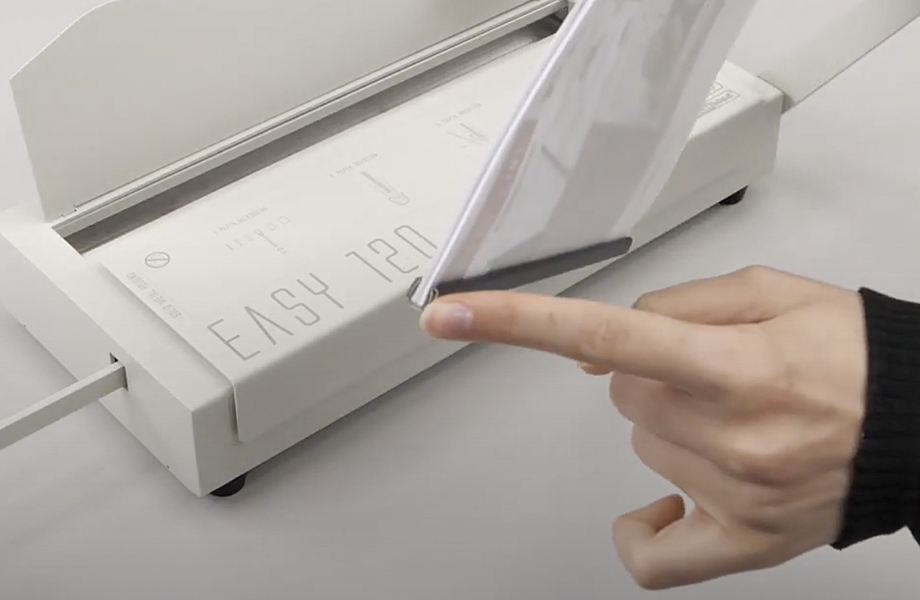Is it possible to quickly and easily bind documents without punching, gluing or stapling the paper? Of course! METALBIND and C-BIND binding systems are by far the easiest document binding systems. Both binding systems involve placing sheets of paper in a metal channel, which is then clamped - and that's it! The result is a perfectly bound document. Thanks to this solution, the bound sheets of paper retain their shape and are not damaged, and if necessary the documents can be easily de-binded, i.e. the previously clamped channel can be opened and the mis-bound pages removed or new ones inserted. Binding machines with both systems are extremely easy to operate, and with the wide range of available covers and accessories, you can easily bind your documents exactly as you want. But which system to choose: METALBIND or C-BIND? Find out what the differences are!
A characteristic feature of the C-BIND system is that the channel is located inside the cover, with which it forms a single unit, and during binding it is clamped on both sides. The special design of the channel ensures that the paper keeps its shape and is not damaged - no punching, stapling or gluing is required. Documents can be bound in both hard and soft covers.

The METALBIND binding system, like C-BIND, is based on joining the sheets together by means of a special channel, thanks to which the paper is not damaged - it is not stapled, punched or glued. The main difference between the METALBIND and C-BIND systems, however, is that with METALBIND the channel is a separate element and is located outside the binding, and both covers - back and front - are held in place by the channel after binding, just like a bound document.

The special shape of the channel ensures a perfect appearance of the documentation - during binding, only the rear part is clamped, which holds the entire documentation, while the front wall of the channel is never deformed. This ensures the perfect appearance of the document! In the larger channels, special stops are used to make it easier to centre the documentation and prevent it from moving. The channels are available in various sizes, either lacquered or with an elegant veneer finish - to match your covers without any problems.
The great advantage of the METALBIND system is its versatility - you can use the same covers for different document thicknesses, simply by selecting the appropriate channel. This significantly reduces the amount of space required for storing covers. Furthermore, binding machines using the METALBIND system can bind documents in the C-BIND system, simply by purchasing a special insert (O.CB Insert).

|
C-BIND |
Metalbind |
|
CHANNEL / COMB SELECTION |
|
|
Depending on the number of sheets and the paper weight, the appropriate binding comb width should be selected. Spine widths available:
|
Depending on the number of sheets and the paper weight, the channel width should be selected accordingly. Channels are available in widths:
|
|
MAXIMUM NUMBER OF SHEETS TO BE BOUND |
|
|
300 sheets of paper (of 80 g/m2 ). |
300 sheets of paper (of 80 g/m2 ). |
|
TYPES OF COVERS |
|
|
|
|
DEBINDABLE |
|
|
YES |
YES |
Binding documents with METALBIND and C-BIND systems is a simple and fast way to obtain beautifully bound and effectively protected documentation. Thanks to a specially constructed channel holding the pages there is no need to destroy the paper by sewing, gluing or punching, and the binding process itself lasts much shorter than in the case of traditional binding machines using spiral binding spines.
METALBIND and C-BIND binding machines are easy to operate. They are ideal for offices, secretariats and offices, and can also be used in tourist and commercial establishments. If you are looking for an effective and durable way to bind project documentation, a sales offer, a restaurant menu or a hotel guest information catalogue, the METALBIND and C-BIND binding systems will certainly prove their worth, providing you with elegantly and robustly bound documents.